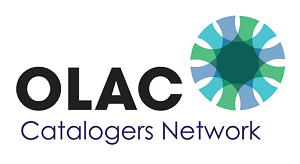Publication Date
8-2002
Abstract
A summary note is a brief description of a resource. In most formats, it is an optional note under AACR2, but it becomes especially important when contents cannot be easily examined, as in videos, motion pictures, sound recordings, archival collections, and electronic resources. An abstract is more extensive, and can be a stand-alone source of information about the resource. It is a rich source of keywords for electronic retrieval. The two terms are increasingly used together or interchangeably in guidelines for catalogers for use of the MARC tag 520, and the definitions are sometimes merged to allow for more detail and precision in the content of the note.
The quality of summary notes found in online bibliographic records varies greatly, and the audiovisual cataloging community has recently discussed the issue on the OLAC-LIST. In April, 2001, in response to a query, catalogers wrote about their practices in evaluating or creating original summary notes. Responses criticized the use of evaluative or editorial language, "giving away the ending of the story", and poor grammar and spelling. The overall consensus was that catalogers read summaries carefully and edited them if they found them unsuitable. Catalogers cannot rely on commercially produced commentaries or information found on publishers’ web sites to accurately and objectively describe any resource. In the future, machine scanning, and use of artificial intelligence for text summarization may be helpful for creation of summary notes, but it is likely that a human interface will still be needed to determine what to say and how to say it and to winnow out inappropriate language.
There are only a few formal instructions for style and content of this note and it is presumed that catalogers would benefit from a comprehensive set of recommendations with examples. AACR2 provides the following advice: Give a brief objective summary of the content of an item […] unless another part of the description provides enough information (Chapters 2, 4, 6, 7, 8, 9, 10, 11). OCLC Bibliographic Inputs and Standards documentation states that use of the 520 summary note is optional. Its definition combines summary, abstract, annotation, and other types of similar notes. While the note usually uses one subfield, subfield a, USMARC allows subfield b for expansion. There is also provision for a display constant that labels the note Summary, Abstract, or Review. The note can be repeated when there is more than one piece to be described or when it is useful to include summaries in several languages. The OCLC Internet Cataloging class, now offered online, gives the following recommendation: "Summary/Description (520) The cataloger may provide a concise, objective, free-text description of the resource. This has value for providing both a fuller description of the resource contents and additional free-text subject terms searchable by keyword in many online catalogs. Note: When cataloging the dynamic resource with changing content, a 520 summary note is generally preferable to a formal 505 formatted contents note".
This task force was given the charge of creating a primer of guidelines for writing summary notes and abstracts and providing resources for catalogers to consult in learning how to do this well. Resources available range from cataloging guides for various formats to writing manuals, to web sites for writing news summaries. We present general and format-specific guidelines, examples of existing summaries and some suggested revisions, and a bibliography of resources.
Creative Commons License

This work is licensed under a Creative Commons Attribution 4.0 International License.
Publication Type
Report



